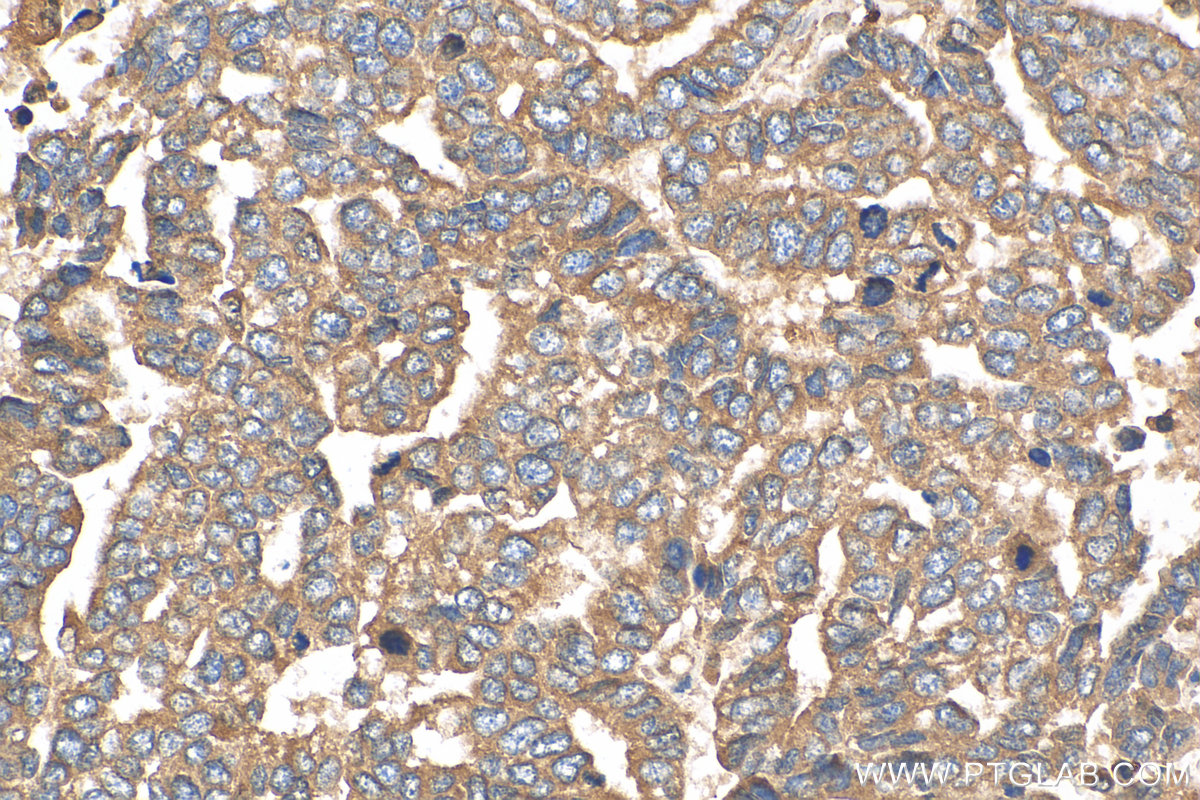验证数据展示
经过测试的应用
| Positive IHC detected in | human ovary tumor tissue Note: suggested antigen retrieval with TE buffer pH 9.0; (*) Alternatively, antigen retrieval may be performed with citrate buffer pH 6.0 |
推荐稀释比
| 应用 | 推荐稀释比 |
|---|---|
| Immunohistochemistry (IHC) | IHC : 1:50-1:500 |
| It is recommended that this reagent should be titrated in each testing system to obtain optimal results. | |
| Sample-dependent, Check data in validation data gallery. | |
产品信息
21662-1-AP targets ATP5G3 in IHC, ELISA applications and shows reactivity with human samples.
| 经测试应用 | IHC, ELISA Application Description |
| 经测试反应性 | human |
| 免疫原 | ATP5G3 fusion protein Ag16406 种属同源性预测 |
| 宿主/亚型 | Rabbit / IgG |
| 抗体类别 | Polyclonal |
| 产品类型 | Antibody |
| 全称 | ATP synthase, H+ transporting, mitochondrial F0 complex, subunit C3 (subunit 9) |
| 别名 | ATP synthase proteolipid P3, ATP5G3, ATPase protein 9, ATPase subunit c, P3 |
| 计算分子量 | 142 aa, 15 kDa |
| GenBank蛋白编号 | BC106881 |
| 基因名称 | ATP5G3 |
| Gene ID (NCBI) | 518 |
| RRID | AB_3085665 |
| 偶联类型 | Unconjugated |
| 形式 | Liquid |
| 纯化方式 | Antigen affinity purification |
| UNIPROT ID | P48201 |
| 储存缓冲液 | PBS with 0.02% sodium azide and 50% glycerol , pH 7.3 |
| 储存条件 | Store at -20°C. Stable for one year after shipment. Aliquoting is unnecessary for -20oC storage. |
背景介绍
ATP5G3, also known as ATP5MC3, belongs to the ATPase C chain family. ATP5G3 encodes subunit 9 (ATPase subunit c), which is a subunit of the multi-subunit enzyme that catalyzes ATP synthesis during oxidative phosphorylation in mitochondria. ATP synthase is composed of two linked multi-subunit complexes: the soluble catalytic core, F1, and the membrane-spanning component, Fo, comprising the proton channel. The subunit c is a component of the proton channel proteins in the F0 portion of the enzyme.
实验方案
| Product Specific Protocols | |
|---|---|
| IHC protocol for ATP5G3 antibody 21662-1-AP | Download protocol |
| Standard Protocols | |
|---|---|
| Click here to view our Standard Protocols |

